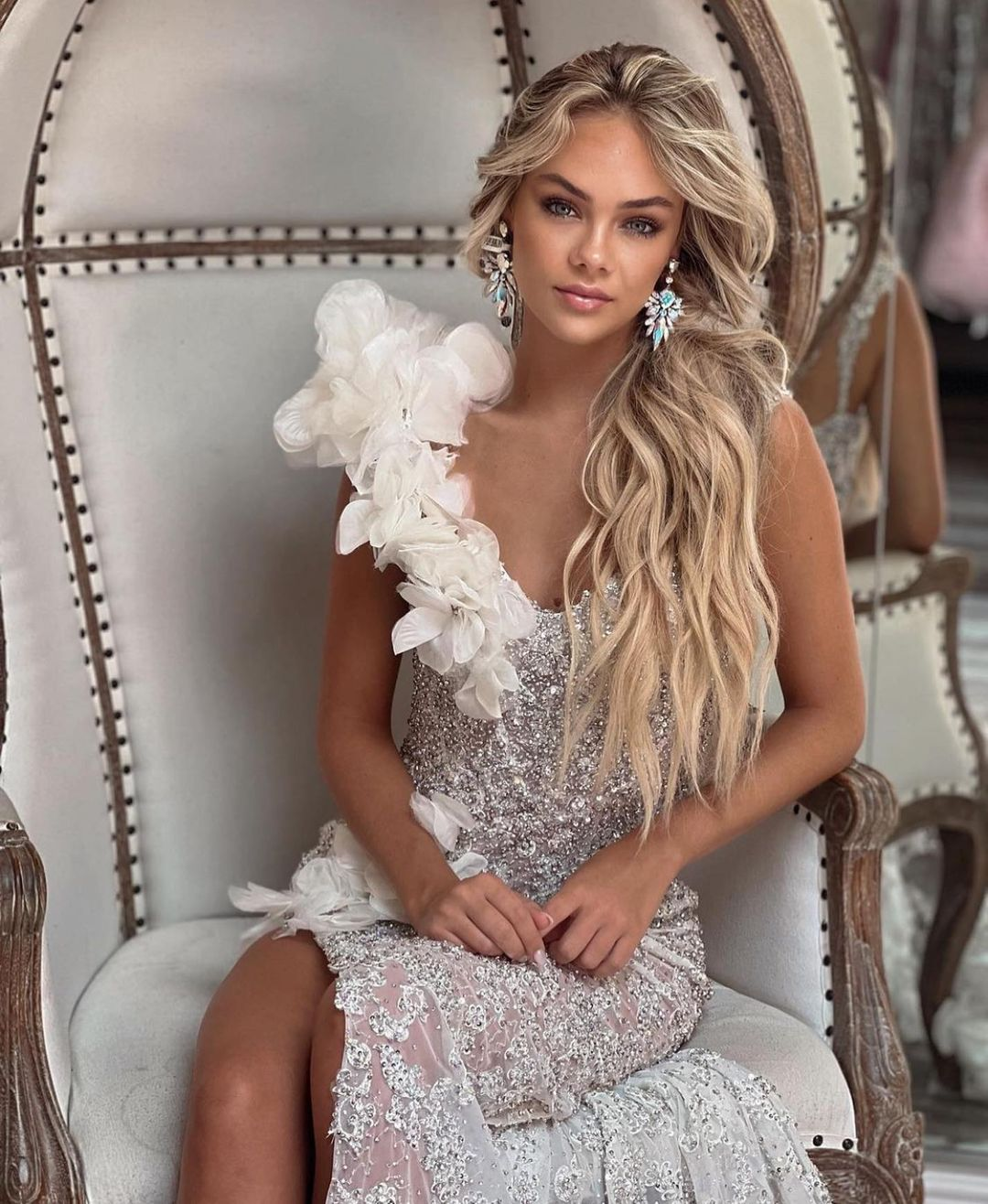- A First-Timer’s Guide to the Perfect Gala Dress - February 20, 2024
- How to Style Yellow Dresses for Every Occasion - February 12, 2024
- Exploring the Versatility of Brown Dresses: Casual to Formal Styles - February 11, 2024
How have homecoming dress trends evolved over the years?
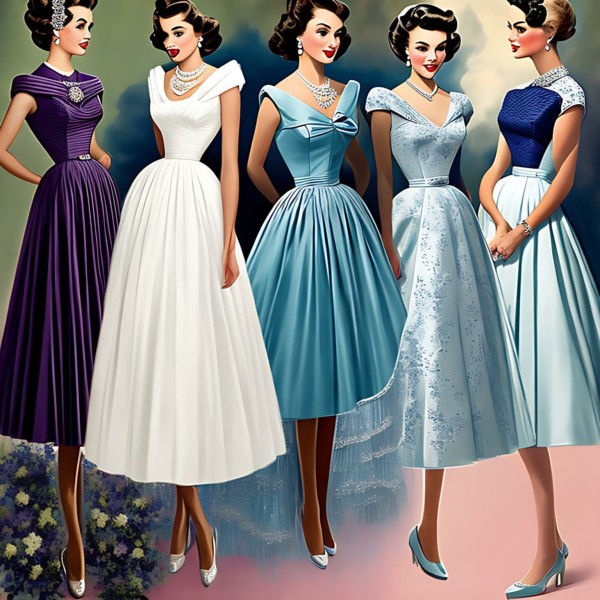
Homecoming dress trends have changed significantly over the years, with each era influencing the dresses that young women wear to this special occasion. This guide will explore the evolution of homecoming dress trends, highlighting the most popular styles from each decade.
The 1950s: Poodle Skirts and Strapless Dresses
In the 1950s, homecoming dress trends were heavily influenced by the day’s fashion. Poodle skirts were all the rage, and young women would often wear full skirts with cinched waists and dresses underneath. Strapless dresses were also popular during this time, with young women opting for dresses that showed off their shoulders and décolletage.
In the 1950s, poodle skirts and strapless dresses were all the rage. Young women often chose full skirts with cinched waists, reflecting the day’s fashion. To understand the significance of attending homecoming and the appropriate attire, read Here’s Why You Should Attend Homecoming – And What to Wear.
The 1960s: Mod Styles and Mini Dresses
The 1960s saw a shift towards more modern, sleek styles. Mini dresses became popular, with young women showing off their legs in shorter hemlines. Shift dresses were also in vogue, with their boxy silhouette and simple lines.
The 1970s: Boho Chic and Maxi Dresses
The 1970s were all about boho chic, and homecoming dress trends reflected this. Maxi dresses were in style, with young women opting for flowy, ethereal styles that gave off a laid-back vibe. Floral prints, bell sleeves, and lace were also popular.
The 1980s: Big Hair and Bright Colors
The excess of the 1980s with its big hair and bright colors contrasts sharply with today’s unique and personalized styles. If you’re curious about how modern homecoming styles cater to a variety of body types, Plus-Size Homecoming Dresses: Flattering Styles for Every Body Type offers valuable perspectives.
The 1990s: Grunge and Slip Dresses
The 1990s were all about grunge, and homecoming dress trends reflected this. Slip dresses were in style, with young women opting for slinky, minimalist styles that showed off their figures. Velvet was also popular, with young women opting for dresses in deep burgundy, navy, and forest green shades.
The 2000s: Glamorous and Sparkly
The 2000s saw a return to more glamorous styles, with young women opting for dresses with lots of sparkle and bling. Strapless dresses were still in style, with young women choosing dresses in silver, gold, and metallic shades. Many young women also opted for dresses with intricate beading and embroidery.
Today: Unique and Personalized
Today, homecoming dress trends are all about uniqueness and personalization. Young women are no longer content to wear the same styles as their peers, instead opting for dresses that reflect their style.
High-low dresses, two-piece dresses, and dresses with cutouts are popular styles, with young women choosing various colors and fabrics.
In conclusion, homecoming dress trends have evolved significantly over the years, with each era influencing the style of dresses that young women wear to this special occasion.
Homecoming dress trends change yearly, from poodle skirts to maxi dresses to unique and personalized styles. As young women prepare for this special occasion, they will continue to seek the perfect dress that reflects their style and makes them feel confident and beautiful.
How do homecoming dresses differ in style and design between different regions of the United States?

Homecoming is an exciting time for high school students, and one of the most critical aspects of the event is choosing the perfect dress.
Over the years, homecoming dress trends have evolved to reflect fashion, culture, and societal changes. However, the style and design of homecoming dresses can also vary depending on the region of the United States.
In the South, homecoming is often considered a formal event, and dresses tend to be more traditional and conservative.
Southern belles often opt for classic styles, such as A-line or ballgown dresses, which are long and flowing and may feature lace, tulle, or beading. These dresses are typically paired with elegant updos and simple jewelry, creating a timeless and sophisticated look.
In the Midwest, homecoming is usually casual, and dresses tend to be more straightforward and understated. Girls often opt for shorter dresses, which are more practical for dancing and socializing.
Popular styles include fit-and-flare dresses, which hug the waist and flare out at the skirt, and shift dresses, which are loose and flowing. The color palette in the Midwest tends to be more muted and neutral, with girls opting for earth tones, pastels, and jewel tones.
On the East Coast, homecoming dresses tend to be more fashion-forward and daring. Girls often choose dresses with bold prints, intricate embellishments, or daring cutouts.
The dress style can vary widely, from sleek and modern to romantic and vintage-inspired. East Coast girls also experiment more with makeup and hairstyles, creating a more dramatic and glamorous look.
On the West Coast, homecoming dresses often reflect the laid-back, bohemian vibe of the region. Girls may opt for flowy maxi or playful mini dresses, often featuring floral prints, crochet details, or fringe accents.
The color palette is typically bright and vibrant, with girls choosing bold hues like turquoise, coral, and fuchsia. West Coast girls also tend to embrace a more natural, effortless beauty look, with loose waves and minimal makeup.
Overall, homecoming dress trends can vary widely depending on the region of the United States. Whether you’re a Southern belle, a Midwestern girl-next-door, an East Coast fashionista, or a West Coast bohemian, there’s a homecoming dress style to suit your unique personality and sense of style.
How do homecoming dresses vary in style and design between high schools and school districts?
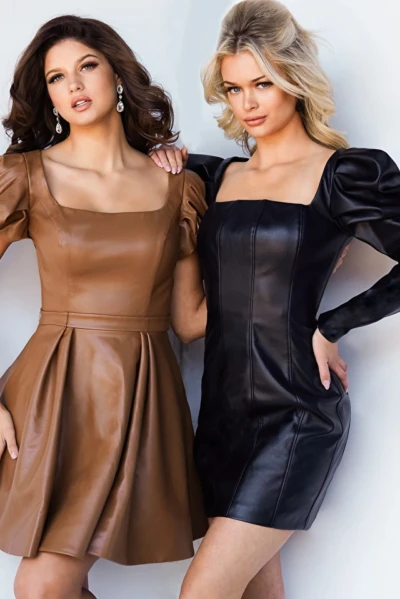
Regarding homecoming dresses, the variation in style and design isn’t limited to just regions of the United States but also to different high schools and school districts.
While some schools may have a more traditional approach to homecoming attire, others may encourage more modern and unconventional styles.
For example, some schools may have strict dress codes that limit the style and design of homecoming dresses, while others may allow for more creative expression.
Additionally, different school districts may have different cultural and social norms that influence homecoming dress trends.
In recent years, there has been a rise in the popularity of two-piece and mermaid-style dresses and dresses with intricate beading and embroidery. However, some schools may still prefer traditional styles, such as A-line or ballgown dresses.
Furthermore, homecoming dresses’ color and fabric choices can vary greatly depending on the school and region.
Some schools may have specific color themes for homecoming, while others may allow for more freedom in color choice. Popular fabrics for homecoming dresses include chiffon, satin, and lace.
Overall, the variation in style and design of homecoming dresses between high schools and school districts is vast, with each school and region having its unique take on the popular tradition.
What are the most popular colors and patterns for homecoming dresses, and how do these trends vary from year to year?
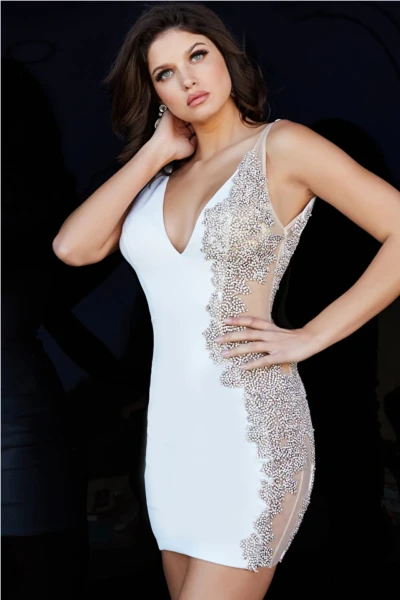
The most popular colors and patterns for homecoming dresses can vary significantly from year to year. However, some classic colors and patterns tend to remain popular.
For example, classic colors such as black, white, and red are popular choices for homecoming dresses, as they are versatile and can be paired with various accessories.
Pastel colors such as blush, mint green, and light blue have become increasingly popular recently.
As for patterns, floral designs are a classic choice for homecoming dresses. However, other patterns such as polka dots, stripes, and animal prints have also been seen in recent years.
It’s important to note that trends in color and pattern can vary greatly depending on the region and school.
Some schools may have specific color themes for homecoming, while others may allow for more color and pattern choice freedom.
Regarding how trends vary from year to year, it’s common for specific colors and patterns to become more prevalent in some years and less so in others. For example, metallic dresses were trendy in 2019, while in 2020, simpler and more classic designs were favored.
The popularity of specific colors and patterns for homecoming dresses can vary yearly and from region to region. However, classic colors and patterns such as black, white, red, and floral designs remain popular.
How do homecoming dresses for plus-size girls differ from those for straight-size girls in terms of availability and design options?
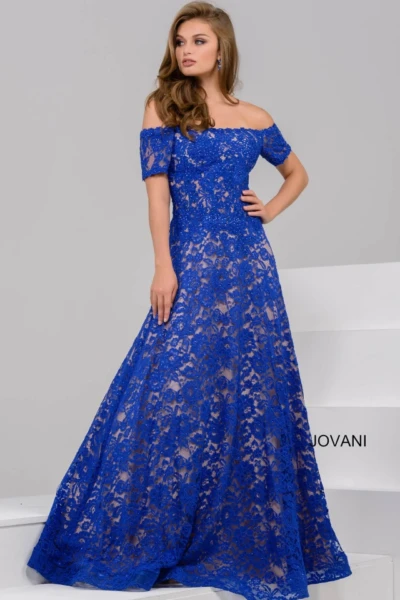
In recent years, there has been a push for more inclusivity in fashion, including the availability of homecoming dresses for girls of all sizes.
However, the reality is that the options available for plus-size girls are often limited compared to those for straight-size girls.
One significant difference is the availability of sizes. While many retailers now offer extended sizes online, in-store options for plus-size dresses may be limited.
Additionally, some retailers may only offer a few styles in larger sizes rather than providing the same opportunities across all sizes.
In terms of design options, there may be differences as well. Plus-size dresses may have different cuts or silhouettes to accommodate different body shapes, such as A-line dresses or dresses with empire waists.
Additionally, designers may use different patterns or colors for plus-size dresses, often opting for darker or more muted colors rather than bold prints or bright colors.
However, it’s important to note that these differences are slowly beginning to fade as the fashion industry becomes more inclusive.
Some designers and retailers now offer the same styles and designs across all sizes, and there is a growing movement toward size inclusivity in the industry.
Overall, while there may still be some differences in availability and design options, the trend toward inclusivity is positive, and we can expect to see even more options for plus-size homecoming dresses in the future.
How does the availability of plus-size homecoming dresses compare to those in standard sizes?

Over the years, the fashion industry has become more inclusive of all body types, but there is still a long way to go.
Regarding homecoming dresses, the availability of plus-size options has historically been limited compared to those in standard sizes.
This is mainly due to the assumption that most customers fall within the normal size range. However, there has been a growing demand for plus-size options, and retailers are beginning to take notice.
Many retailers now offer a more comprehensive range of sizes for their homecoming dress collections, including plus sizes.
However, it is essential to note that not all retailers offer the same range of sizes.
Some may only provide a limited selection of plus sizes or may not offer them at all. This can be frustrating for plus-size customers who are left with limited options.
Another issue is the need for more design options for plus-size dresses. Plus-size dresses often feature different cuts and designs than those for standard sizes, but these options may be limited.
This can make it difficult for plus-size customers to find a dress that fits well and makes them feel confident and stylish.
It’s important to note that the availability and design options for plus-size homecoming dresses vary from retailer to retailer. Some retailers may have a more extensive selection of plus-size dresses, while others may have yet to.
It’s always a good idea to check a retailer’s website or call their customer service line to inquire about their selection of plus sizes before visiting the store.
While there has been progressing in offering more plus-size homecoming dress options, there is still a long way to go.
The fashion industry should continue to strive for inclusivity and offer a more comprehensive range of sizes and designs to accommodate all customers.
How do different body types influence the choice of a homecoming dress?
Choosing a homecoming dress can be an exciting and overwhelming experience, especially considering different body types. The shape of a person’s body often influences the dress style they feel most comfortable and confident.
For instance, an A-line dress with a fitted bodice and a flowing skirt is usually flattering for pear-shaped bodies, while a form-fitting sheath dress can accentuate an hourglass figure. Similarly, a high-waisted ballgown with a flared skirt can elongate the body and create a flattering silhouette for petite figures.
Moreover, the choice of neckline can also be influenced by the body type. A v-neckline can elongate the neck and create a flattering look for shorter necks. Similarly, a scoop neckline can flatter those with broader shoulders or a fuller bust.
It is important to note that fashion is evolving, and designers are becoming more inclusive, providing various options to cater to different body types.
Thus, a person should not be discouraged by their body type but rather embrace it and select a dress that makes them feel comfortable and confident. With the right dress, anyone can make a statement and shine on their homecoming day.
In summary, the shape and size of a person’s body can influence their choice of homecoming dress. However, with the increasing availability of diverse styles, sizes, and designs, there are many options for everyone to look and feel their best on their special day.
What are the most common alterations to homecoming dresses, and how much do they typically cost?
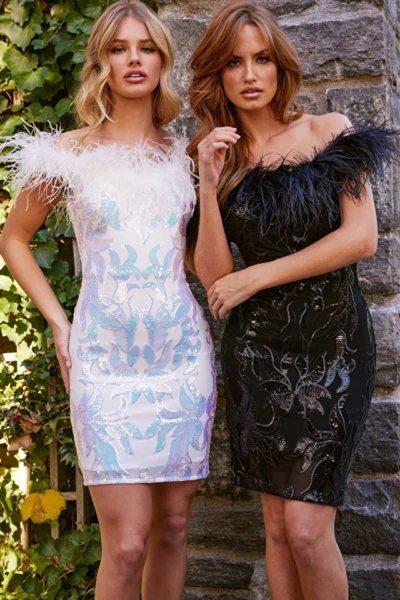
Alterations are common when it comes to formal dresses, including homecoming dresses.
The most common alterations made to homecoming dresses are hemming, taking in or letting out the waist, adjusting the straps or sleeves, and altering the length of the dress.
Hemming is often necessary as most dresses are designed for taller women, and it’s rare to find a dress that fits perfectly right off the rack.
Taking in or letting out the waist is another alteration that is commonly needed as every woman’s body is different, and a dress that fits well in one area may be too tight or loose in another.
Adjusting the straps or sleeves can also make a big difference in how the dress fits, especially for those with narrower or broader shoulders.
Finally, altering the length of the dress is also a popular choice, as some women prefer a shorter or longer hemline than what the dress initially comes with.
The cost of alterations varies depending on the complexity of the alteration, the fabric of the dress, and the location of the tailor or seamstress.
Hemming can cost anywhere from $10 to $50 while taking in or letting out the waist can cost anywhere from $20 to $100. Adjusting the straps or sleeves can cost around $20 to $50, and altering the length of the dress can cost between $30 to $100. Getting a quote from a tailor or seamstress is always best before committing to any alterations.
Overall, alterations are a normal and necessary part of finding the perfect homecoming dress. While they can add to the cost of the dress, they can also make a big difference in how it fits and feels, ultimately making it worth the investment.
How Do Consumers Choose Homecoming Dresses? Price, Brand, or Style?
Homecoming is a time-honored tradition in high schools and colleges, where students come together for a night of dancing, fun, and socializing.
One of the essential elements of this occasion is choosing the perfect homecoming dress. However, the question remains: How do consumers select homecoming dresses? Is it based on price, brand, or style?
Price
Price is a significant factor in most consumer decisions, and the same holds for homecoming dresses. Many consumers prefer to set a budget for their homecoming dress and stick to it.
The price range for homecoming dresses can vary from affordable to exorbitant. Affordable options can be found in department stores, while high-end boutiques carry designer dresses with a higher price tag.
However, while the price is an essential factor, it isn’t the only factor consumers consider when purchasing homecoming dresses.
It is vital to remember that quality should always be maintained for a lower price. Spending more to get high-quality clothing that will last longer is better.
Brand
Brand name recognition can be a crucial factor when choosing a homecoming dress. Many consumers prefer to purchase gowns from well-known brands as they trust the quality and reputation of the brand.
However, brand name recognition is only sometimes the deciding factor for homecoming dresses. Most consumers prioritize style over brand name.
Style
Style is one of the most crucial factors when choosing a homecoming dress. Consumers want a dress that suits their style and makes them feel confident and beautiful.
With many different styles of homecoming dresses, consumers can be overwhelmed with choices.
The most popular homecoming dress styles include:
- A-line dresses
- Ballgown dresses
- Bodycon dresses
- Two-piece dresses
- High-low dresses
The style chosen will depend on the consumer’s personal taste, body type, and the event’s overall theme.
What are the most common accessories paired with homecoming dresses?
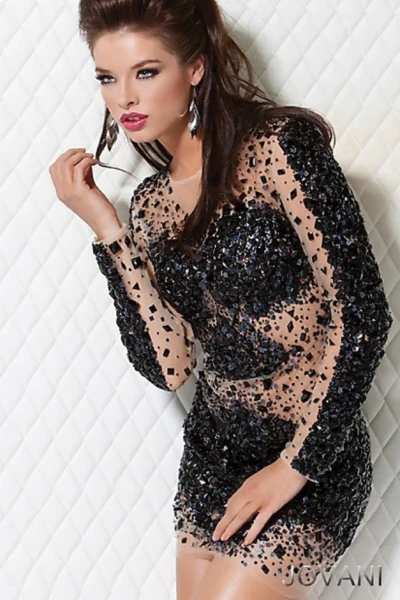
Regarding homecoming dresses, the right accessories can make or break the overall look.
Some of the most common accessories paired with homecoming dresses include jewelry, handbags, shoes, and hair accessories.
Jewelry is a popular accessory for homecoming dresses, with many wearing earrings, necklaces, bracelets, and even rings.
The key to choosing the right jewelry is complementing the dress without overpowering it. For example, if the skirt has many embellishments or detailing, it’s best to opt for simpler jewelry.
A statement piece of jewelry can elevate the overall look if the dress is more understated.
Handbags are another popular accessory for homecoming dresses.
Clutches and small handbags are often favored as they are practical and will stay on the dress. When choosing a handbag, consider the color and style of the dress to find a bag that complements it well.
Shoes are an essential accessory for any outfit, and homecoming dresses are no exception. Depending on the dress style, heels or flats can work well.
However, choosing shoes that are both comfortable and complement the dress is essential. It’s also important to consider the event venue to ensure the shoes are appropriate for the location.
Finally, hair accessories can be a great way to complete the overall look of a homecoming dress. From headbands and hairpins to clips and bows, there are many options available.
When choosing a hair accessory, consider the hairstyle and the dress’s style to ensure that the accessory works well with both.
In conclusion, while many accessories can be paired with homecoming dresses, choosing accessories that complement the dress without overpowering it is crucial.
With the right accessories, a homecoming dress can be elevated to a new level of elegance and sophistication.
For more on today’s trends and how to choose a dress that reflects your personal style, you might consider reading Your Ultimate Guide To Homecoming Dresses.
To continue exploring the world of homecoming fashion, and to see why many opt for the brand’s designs, the article Why Jovani Homecoming Dresses Are So Amazing could be your next read.
Return to Homecoming: The Complete Guide to Celebrating the TraditionLast updated 5 months ago.



